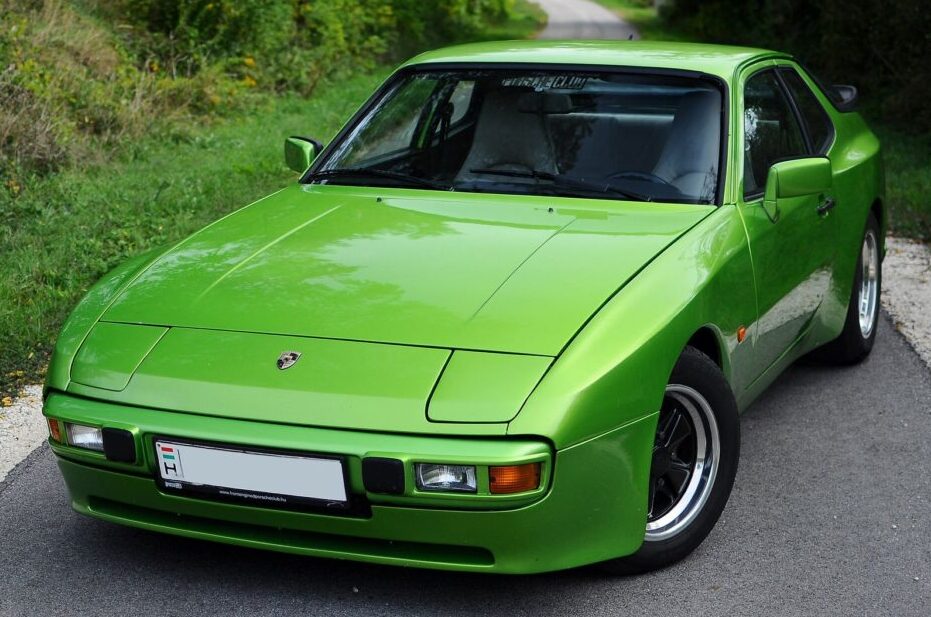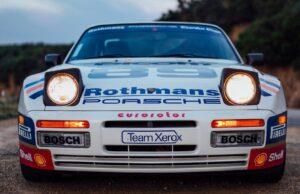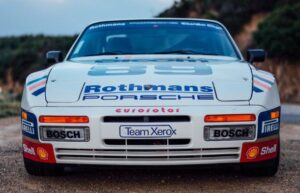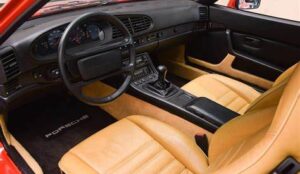Porsche 944: Everything You ever wanted to know
2. How fast is the Porsche 944 Turbo?
3. What engines does the Porsche 944 have?
4. What are the innovations on the Porsche 944?
How much is a Porsche 944?
Everything you ever wanted to know about the Porsche 944. The price of a Porsche 944 can vary widely depending on factors such as the model year, condition, mileage, and any modifications. In general, you might find a Porsche 944 in the range of €10,000 to €30,000 or more.
Please note that these are rough estimates, and actual prices can vary based on the specific details of the car and the current market conditions. It’s recommended to check recent listings on car-selling websites or consult with local dealerships for the most accurate and up-to-date pricing information.
How fast is the Porsche 944 Turbo?
The Porsche 944 Turbo, produced from the mid-1980s to the early 1990s, had varying performance specifications depending on the specific model year. Generally, the top speed of the Porsche 944 Turbo was around 162 mph (260 km/h). The acceleration from 0 to 60 mph (0 to 97 km/h) typically took about 5.9 seconds.
Again, these figures can vary slightly based on the specific model year, engine specifications, and any modifications made to the vehicle. For the most accurate and up-to-date information, it is recommended to refer to the specifications provided by Porsche for the particular model year of interest.
What engines does the Porsche 944 have?
The Porsche 944, produced from 1982 to 1991, was offered with several different engine options throughout its production run. The specific engines available varied by model. Here’s a comprehensive overview of the various engines that were used in the Porsche 944:
Porsche 944 (1982–1985):
- The initial models featured a 2.5-liter inline-4 engine.
The engine was a naturally aspirated, SOHC (Single Overhead Camshaft), producing around 150 horsepower.
Porsche 944 Turbo (1986–1989):
- The 944 Turbo, also known as the 944 Turbo or 951, featured a turbocharged and intercooled version of the 2.5-liter inline-4 engine.
This engine was capable of producing significantly more power, with outputs ranging from approximately 217 to 250 horsepower depending on the model year.
Porsche 944 S (1987–1988):
- The 944 S introduced a 16-valve, 2.5-liter inline-4 engine with dual overhead camshafts (DOHC).
This engine was naturally aspirated and produced around 188 horsepower.
Porsche 944 S2 (1989–1991):
- The 944 S2 featured a 3.0-liter inline-4 engine with dual overhead camshafts.
This engine was naturally aspirated and produced approximately 208 to 211 horsepower.
Porsche 944 Turbo S (1988–1989):
- The Turbo S was a higher-performance variant of the 944 Turbo, featuring a modified version of the turbocharged 2.5-liter engine.
It had an increased horsepower output, ranging from around 247 to 250 horsepower.
Each of these engines was paired with various transmission options, including manual and automatic transmissions. Additionally, the Porsche 944 series was known for its balanced weight distribution and handling characteristics, making it a popular choice among driving enthusiasts.
What are the innovations on the Porsche 944?
The Porsche 944, produced from the early 1980s to the early 1990s, was known for several innovative features and design elements that contributed to its popularity among sports car enthusiasts. Here are some notable innovations and features of the Porsche 944:
Transaxle Configuration:
- One of the key design features of the 944 was its transaxle configuration, which means that the transmission is located at the rear of the car, integrated with the rear axle. This design helped achieve a more balanced weight distribution, enhancing the car’s handling and performance.
Balanced Weight Distribution:
- The placement of the transaxle and other design considerations led to a nearly 50/50 front-to-rear weight distribution. This balance contributed to the 944’s responsive and predictable handling characteristics.
Four-Cylinder Engine:
- In contrast to many other high-performance sports cars of its time, the Porsche 944 featured a four-cylinder engine. The engine’s design, including its use of aluminum construction, helped keep the car’s weight down and contributed to its agility.
Turbocharged Variants:
- The introduction of turbocharged variants, such as the Porsche 944 Turbo (951), brought forced induction technology to the model lineup. This significantly increased the engine’s power output and performance, catering to drivers seeking a more exhilarating driving experience.
Variety of Engine Options:
- The 944 series offered a range of engine options, including naturally aspirated and turbocharged versions. This allowed customers to choose a model that aligned with their performance preferences and driving style.
Advanced Suspension System:
- The 944 featured a sophisticated suspension system, including MacPherson struts at the front and a rear independent suspension. This setup contributed to the car’s precise handling and road-holding capabilities.
Innovative Interior Design:
- The interior of the Porsche 944 was designed with driver-focused ergonomics. Notable features included a centrally located instrument cluster and a driver-oriented cockpit layout.
Convertible Variant:
- The Porsche 944 was also available as a convertible, introducing open-top driving to the model lineup. The convertible variant featured a manually operated soft top.
These innovations collectively positioned the Porsche 944 as a well-rounded sports car, appealing to drivers who sought a blend of performance, handling, and everyday usability. While the model is no longer in production, it has left a lasting legacy in the automotive world.
Are you already a proud owner of a Porsche 944? If so, check out our selection of parts for this car at the following link:
https://octoclassic.com/product-category/porsche/944
Photos sources: pinterest.jp, Pinterest, pinterest.com.mx










